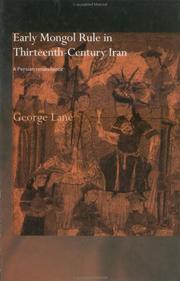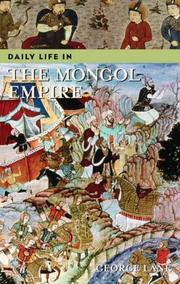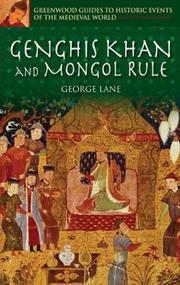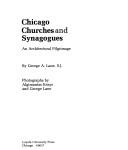| Listing 1 - 10 of 29 | << page >> |
Sort by
|
Book
ISBN: 9781780766058 178076605X 9781780766065 1780766068 1350985163 1786733390 1786723395 Year: 2019 Publisher: London, England : London : I.B. Tauris, Bloomsbury Publishing,
Abstract | Keywords | Export | Availability | Bookmark
 Loading...
Loading...Choose an application
- Reference Manager
- EndNote
- RefWorks (Direct export to RefWorks)
The Mongol Empire was the mightiest land empire the world has ever seen. At its height it was twice the size of its Roman equivalent. For a remarkable century and a half it commanded a population of 100 million people, while the rule of Chinggis (Genghis) Khan marched undefeated from the Pacific Ocean to the Caspian Sea. George Lane argues that the Mongols were not only subjugators who swept all before them but one of the great organising forces of world history. His book traces the rise of the Great Khan in 1206 to the dissolution of the empire in 1368 by the Ming Dynasty. He discusses the unification of the Turko-Mongol tribes under Chinggis' leadership; the establishment of a vigorous imperium whose Pax Mongolica held mastery over the Central Asian steppes; imaginative policies of religious pluralism; and the rich legacy of the Toluid Empire of Yuan China and Ilkhanate Iran. Offering a bold and sympathetic understanding of Mongol history, the author shows that commercial expansion, cultural assimilation and dynamic political growth were as crucial to Mongol success as desire for conquest.
Mongolen. --- Mongols --- Mongols. --- History. --- S04/0660 --- S23/0515 --- History --- China: History--Yuan: .... - 1368 --- Mongolia and the Mongols (including Tannu Tuva, Buriats)--Genghis Khan and his family

ISBN: 1134431031 1280071303 9786610071302 0203417879 9780203417874 9781280071300 0415297508 9781134430987 9781134431021 9781134431038 9780415297509 9780415444545 1134431023 Year: 2003 Publisher: New York RoutledgeCurzon
Abstract | Keywords | Export | Availability | Bookmark
 Loading...
Loading...Choose an application
- Reference Manager
- EndNote
- RefWorks (Direct export to RefWorks)
This book opposes the way in which, for too long, the whole period of Mongol domination of Iran has been viewed from a negative standpoint.
Iran --- History --- Civilization.
Book
ISBN: 0367607042 9780367607043 Year: 2020 Publisher: London: Routledge,
Abstract | Keywords | Export | Availability | Bookmark
 Loading...
Loading...Choose an application
- Reference Manager
- EndNote
- RefWorks (Direct export to RefWorks)
The Mongols in Iran provides an annotated, paraphrased translation of a thirteenth-century historical chronicle penned, though not necessarily authored, by Quṭb al-Dīn Shīrāzī. This chronicle, a patchwork of anecdotes, detailed accounts, diary entries and observations, comprises the notes and drafts of a larger, unknown, and probably lost historical work. It is specific, factual, and devoid of the rhetorical hyperbole and verbal arabesques so beloved of other writers of the period. It outlines the early years of the Chinggisid empire, recounts the rule of Hulegu Khan and his son Abaqa, and finally, details the travails and ultimate demise and death of Abaqa’s brother and would be successor, Ahmad Tegudar. Shirazi paints the Mongol khans in a positive light and opens his chronicle with a portrait of Chinggis Khan in almost hallowed terms.
Iran --- Iran --- Ilkhanid dynasty --- Mongols --- Quṭb al-Shīrāzī, Maḥmūd ibn Masʻūd, 1236 or 1237-1310 or 1311

ISBN: 0313332266 Year: 2006 Publisher: Westport (Conn.) : Greenwood Press,
Abstract | Keywords | Export | Availability | Bookmark
 Loading...
Loading...Choose an application
- Reference Manager
- EndNote
- RefWorks (Direct export to RefWorks)

ISBN: 0313325286 Year: 2004 Publisher: Westport (Conn.) Greenwood
Abstract | Keywords | Export | Availability | Bookmark
 Loading...
Loading...Choose an application
- Reference Manager
- EndNote
- RefWorks (Direct export to RefWorks)
Mongols --- History --- Genghis Khan,
Book
Year: 1952 Publisher: Baltimore (Md.): American oriental society,
Abstract | Keywords | Export | Availability | Bookmark
 Loading...
Loading...Choose an application
- Reference Manager
- EndNote
- RefWorks (Direct export to RefWorks)
Book
Year: 1948 Publisher: Baltimore (Md.): American oriental society,
Abstract | Keywords | Export | Availability | Bookmark
 Loading...
Loading...Choose an application
- Reference Manager
- EndNote
- RefWorks (Direct export to RefWorks)
Book
Publisher: [Lieu de publication inconnu]: [éditeur inconnu],
Abstract | Keywords | Export | Availability | Bookmark
 Loading...
Loading...Choose an application
- Reference Manager
- EndNote
- RefWorks (Direct export to RefWorks)

ISBN: 0829403736 9780829403732 Year: 1981 Publisher: Chicago: Loyola university press,
Abstract | Keywords | Export | Availability | Bookmark
 Loading...
Loading...Choose an application
- Reference Manager
- EndNote
- RefWorks (Direct export to RefWorks)
Church buildings --- Synagogues --- Chicago (Ill.) --- Chicago (Ill.)
Book
Year: 1952 Publisher: Baltimore : American Oriental Society,
Abstract | Keywords | Export | Availability | Bookmark
 Loading...
Loading...Choose an application
- Reference Manager
- EndNote
- RefWorks (Direct export to RefWorks)
| Listing 1 - 10 of 29 | << page >> |
Sort by
|

 Search
Search Feedback
Feedback About UniCat
About UniCat  Help
Help News
News